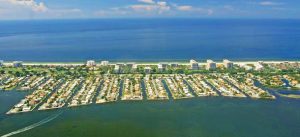Florida Home Prices Lag U.S. Gains

 Florida home prices rose 5.6 percent in May, falling short of the U.S. average.
Florida home prices rose 5.6 percent in May, falling short of the U.S. average.
But state prices are projected to jump 7.2 percent over the next 12 months, outpacing the rest of nation, data provider CoreLogic said Tuesday.
Home prices, including distressed sales, increased at a 7.1 percent clip nationwide in the past year. However, U.S. prices are forecast to slow to a 5.1 percent gain by May 2019.
From April to May, home prices rose 0.3 percent in Florida and 1.1 percent across the country.
“The lean supply of homes for sale is leading to higher sales prices and fewer days on market, and the supply shortage is more acute for entry-level homes,” said Frank Nothaft, chief economist at CoreLogic.
“During the first quarter, we found that about 50 percent of all existing homeowners had a mortgage rate of 3.75 percent or less. May’s mortgage rates averaged a seven-year high of 4.6 percent, with an increasing number of homeowners keeping the low-rate loans they currently have, rather than sell and buy another home that would carry a higher interest rate,” he said.
Locally, prices for re-sale single-family homes increased 5.2 percent to a median $290,976 in the Sarasota-Manatee region during May, according to an earlier report from the Florida Realtors trade group. Prices in Charlotte County rose 3.9 percent top $225,000.
Condo re-sale prices were up 3.3 percent to a median $217,000 in Sarasota-Manatee, and surged 21 percent to $179,000 in Charlotte.
An ongoing shortage of homes in the market continues to pressure prices. The stock of homes for sale in Sarasota, for example, decreased by nearly 6 percent in May.
“The CoreLogic consumer research demonstrates that, despite high home prices, renters want to get out of their rental property and purchase a home,” said Frank Martell, the data company’s president/CEO. “Even in the most expensive markets, we found four times as many renters looking to buy than homeowners willing to sell.”
Home prices grew in every state in May. The top increases were posted in Washington, at 12.8 percent; Nevada, at 12.4 percent; and Idaho, at 11.2 percent.